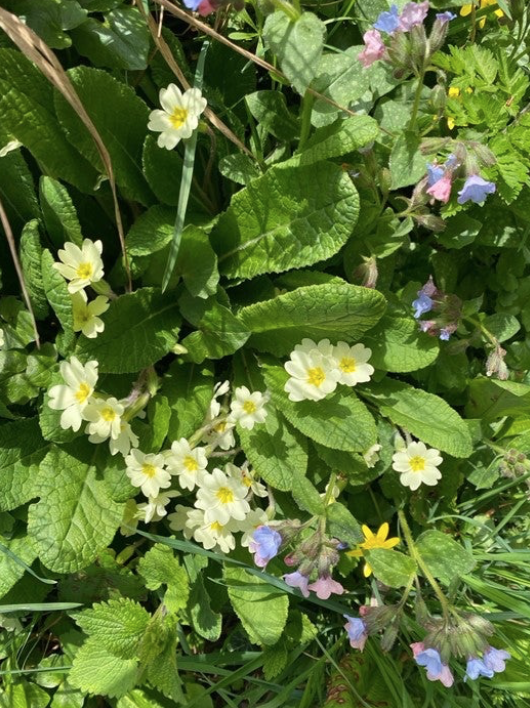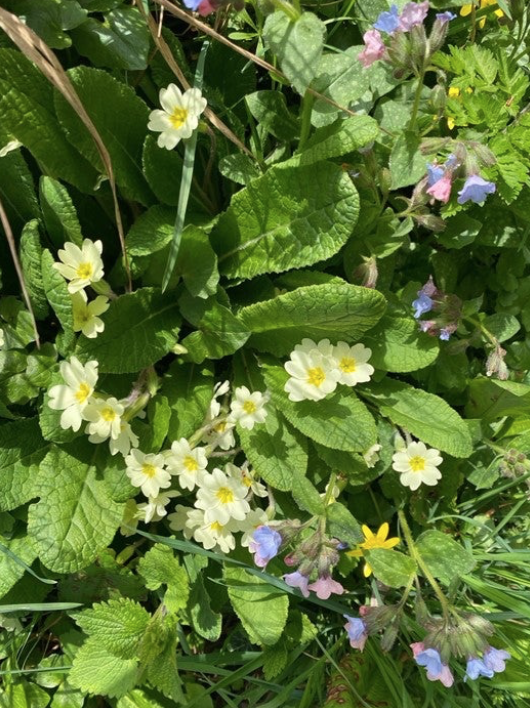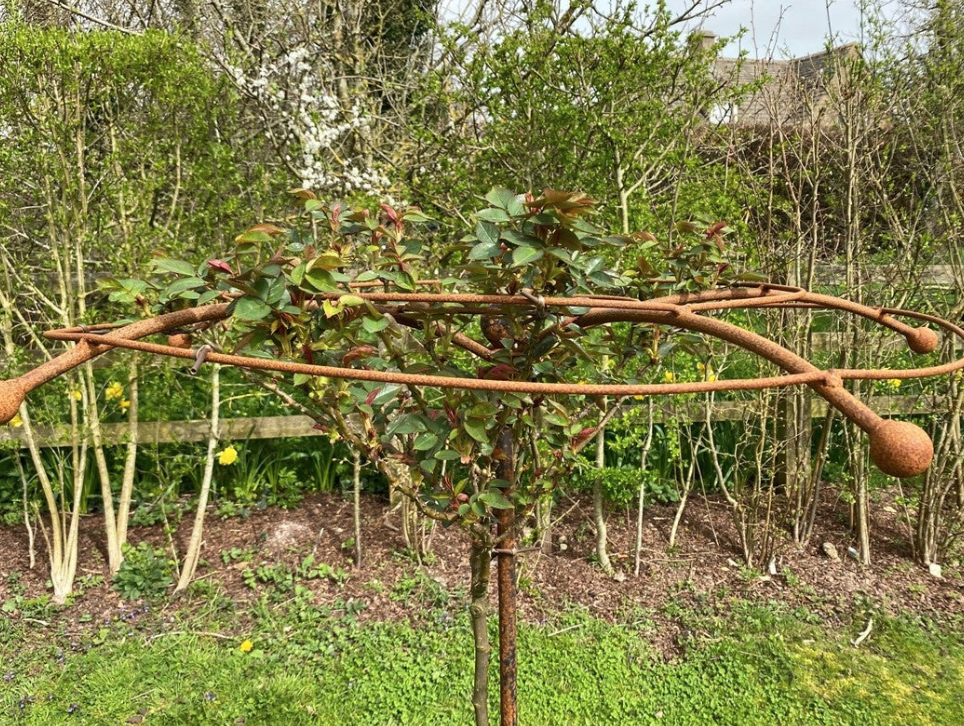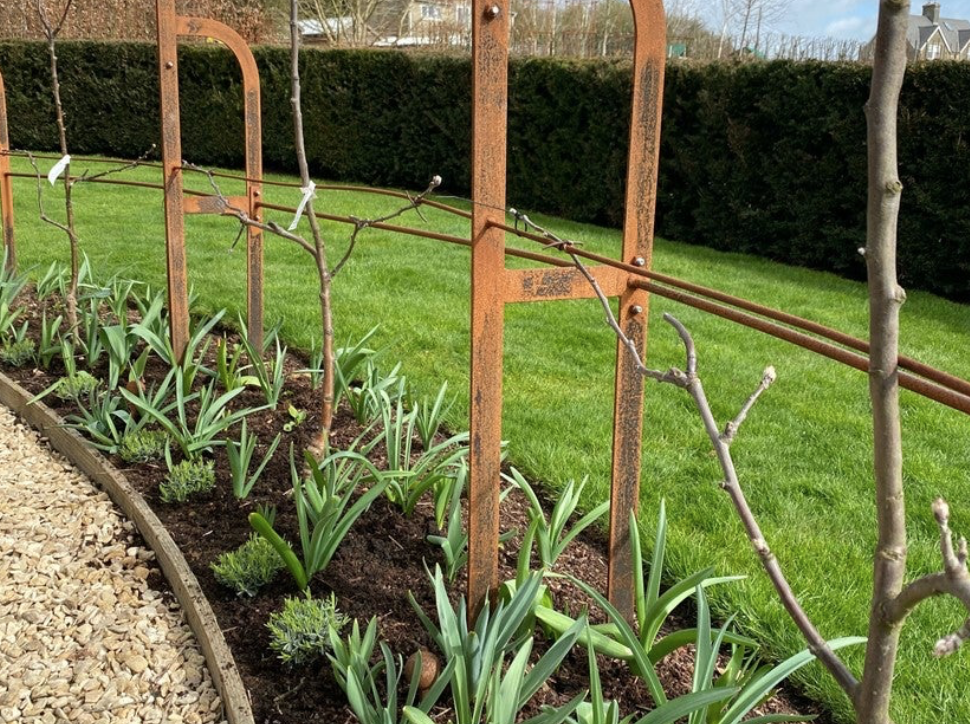
Spring Garden and nature notes
SEO Space
Pale wild primroses nestle alongside lungwort..

Lesser celandine is not only bright but the petals have a glossy sheen.

As an example, what do you call this lovely blossom?
Blackthorn; Straif (meaning strife); sloe plum; snag; spiny plum; wishing thorn; faery tree; (dark) mother of the woods; pear hawthorn.
We live in the Thames Valley, close to the source of the river near Kemble. We are surrounded by farmland and I watch year-round as the young Thames rises and falls, flooding the surrounding fields in winter and completely dry in summer.
One of my regular walks takes me along country lanes between Ewen and Somerford Keynes. At this time of year my eye is caught by flashes of white and yellow in the hedgerows. Why are so many early flowers yellow or white? Like all of life, it’s about the need to reproduce. The first flowers of spring are often white or yellow to attract the pollinators that are active. Although we do see bumble bees emerging from hibernation on warm days, the majority of early spring pollinators are flies that lack colour vision. White and yellow reflect light and stand out against the green background of tree leaves, shrubs and grasses enabling pollinators to seek them out more easily.
Some years ago, a great friend, who had recently retired from an overseas career and was at that time a gardening novice, asked me to stop using the Latin names for plants and to give her the simple names that she knew and recognised from childhood. I realised then that I had been privileged to know, over many years, gardeners (a great plantswoman; my botanical painting teachers; a garden writer; a biologist and others) who made me realise and then taught me that the only way to identify a plant correctly was to give it its Latin name.

All of which we know as the essential ingredient of Sloe Gin – prunus spinosa!

One of our most popular items. Perfect for everyday use. Exceptional quality and choice.

A standard rose umbrella is easy to install - see below.
Last autumn, I defied all advice and divided my baptesia australis which had grown far too big for the Clematis & Rose Lobster Pot that had originally contained its lush foliage and lovely pea-like flowers. Imagine my relief when I spotted the thick purple shoots (almost like asparagus) of the replanted portion looking none the worse for its experience.
The red shoots of peonies are just emerging. Peonies can live for over 50 years and the clumps increase in size with the years so planting with care and supporting them well is worth the time and investment. Alongside the peonies is a particular favourite of mine: pulmonaria ‘Blue Ensign’. As a child I knew this plant as ‘Soldier, Sailor’ but it has many names and is more commonly known as lungwort because the spotted oval leaves of P. Officinalis were thought to symbolize diseased, ulcerated lungs, and so were used to treat pulmonary infections.
I wrote about planting our espaliered apple trees earlier in the year. The bed is now underplanted with lavender, alliums, ammi majus, lilium regale and agapanthus and should give me successive flowers over the coming months as we sit in the outdoor office/dining room (once it has a roof on!). Next to our own prototype is the espalier we supplied to a client which I think looks stunning!
I get a lot of queries about installing our Standard Rose Umbrella – a nineteenth century favourite that we have re-interpreted for modern standard roses. Recently, I was able to photograph a standard rose support that shows perfectly how the roses should be trained. The support is planted alongside the rose with the ‘umbrella’ just above the break where the branches emerge. The branches are allowed to grow through the umbrella and are then tied back in arches to the outer ring. A photograph of a much younger standard in our own garden shows the process beginning.
I couldn’t finish my early spring notes without a mention of my firm favourite in the narcissus family – Narcissus Cyclamineus ‘Jenny’. This is a dainty narcissus that seems equally at home in shade along a woodland path or in an herbaceous border; her recurved petals and the pale ivory of her trumpet glow against the emerging spring greens. I have planted her in clumps throughout my large herbaceous borders and, having learned over bitter years about the result of putting a spade through a precious bulb, I now put a stake (hammered well in) in the middle of any bulb clump I plant (alliums, lilies, narcissus) to mark the spot forever.
Meanwhile, I know that you too are seeing the need for containing and supporting the great surge of growth that came in the wake of the few days of warmth in the last days of March – plants seem to be just like us; we shed our fleeces at the first possible indication of spring. Our ‘Goods out’ yard is full of supports ready to be delivered to you.
Browse our complete range of plant supports at www.muntons.net
Follow us on Pinterest for more advice and inspiration for your English country garden: www.pinterest.co.uk/plantsupports
Follow us on Instagram: www.instagram.com/muntons_plant_supports
Follow us on Facebook: https://www.facebook.com/muntonstraditionalplantsupports



